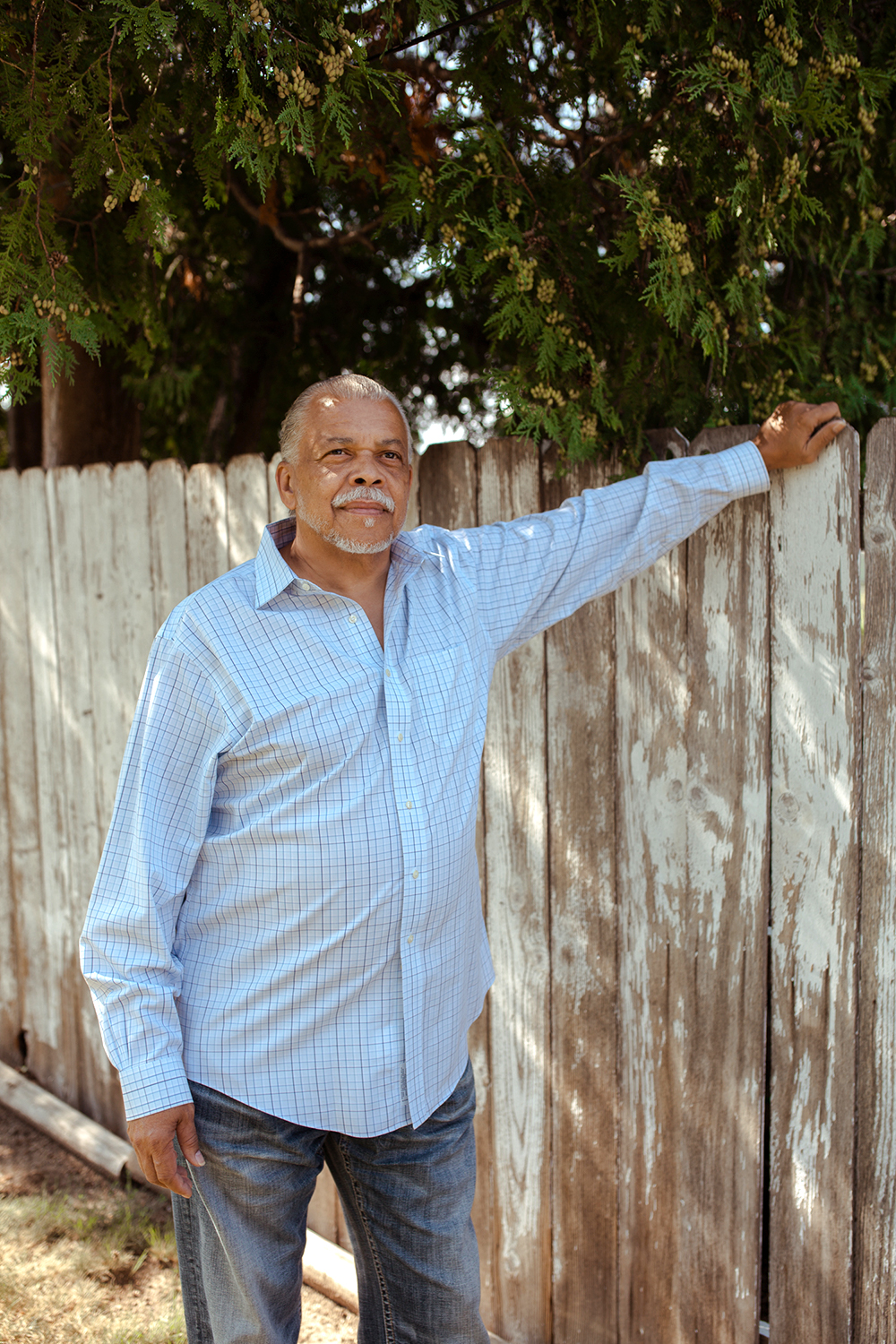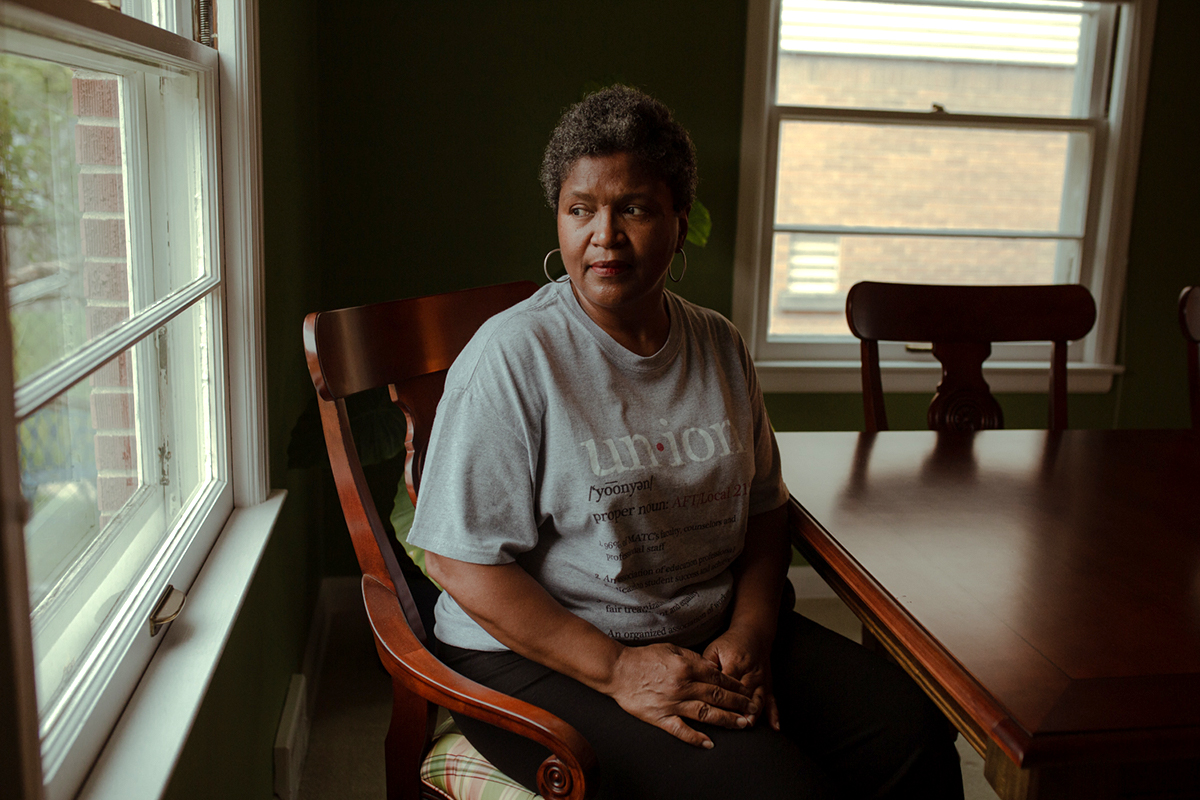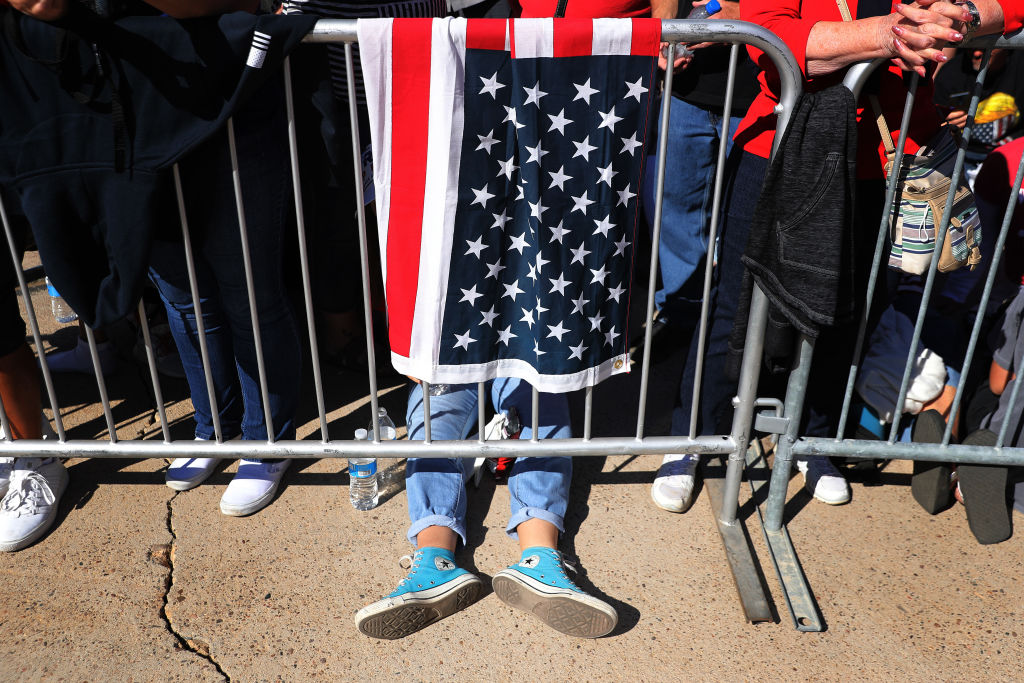Anthony Rainey’s parents met in Milwaukee after moving from Arkansas and Louisiana in the 1940s. After graduating from high school in 1976, he was able to get a job in a factory without a college education.
Following a few years in different jobs – one beating the dents out of snowmobile hoods – he decided he wanted to become a tool and die maker. He called up every machine shop in the phone book, looking for an apprenticeship. Back then a strategy like that could be successful, and Rainey’s was.
“I didn’t have anybody in the family that was a tool and die maker,” he says. “I had no contacts. That’s what it used to be like.”
If the Democrats hope to win Wisconsin in November, they will need to rally and excite Black Milwaukee, as the city is approximately 40 percent African American. Donald Trump won Wisconsin in 2016 by a mere 22,748 votes by turning out rural areas, combined with low turnout in the state’s urban areas, including Milwaukee.
If the Democrats hope to win Wisconsin in November, they will need to rally Black Milwaukee, as the city is approximately 40 percent African American.
Democratic leaders, after their missteps in 2016, seem to understand the importance of the city, a huge population center in swing-state Wisconsin. Sen. Kamala Harris campaigned in Milwaukee in early September, her first in-person event as Joe Biden’s running mate.
The Democratic National Convention, before it became virtual due to the coronavirus pandemic, was set to take place in Milwaukee. The convention was supposed to be a boon for the city’s small businesses and put the city in the spotlight.
Like many cities in the Rust Belt, Milwaukee – extremely segregated and extremely unequal – could use the attention. Milwaukee was once one of the best places for Black families in the country, and its transformation paints a picture of how American capitalism and disastrous economic policies have failed the Black community. Understanding what’s happened to Rainey’s and his children’s generations is crucial to mapping a path forward.
Milwaukee was one of the last outposts of the Great Migration, and as it became a springboard for a blue-collar, Black middle class, its African American population grew from about 10,000 in 1945 to 105,000 in 1970. Black families made their way from Southern states to Milwaukee for good jobs with good wages. Racism and poverty still wreaked havoc, but the average income of a Black family in Milwaukee was 19 percent higher than the U.S. average for African Americans.
It was thanks to manufacturing and machining jobs in what was then the center of American progressivism. Most of the big factories and foundries were unionized, lifting wages and benefits for anyone who worked there, including Black workers.

Anthony Rainey, former Master Lock employee, at his home in Milwaukee. Photos by Samantha Shanahan.
In his 20s, Rainey developed a sought-after skill – becoming one of the few tool and die makers in the African-American community and getting a job at Master Lock. And when the layoffs started coming for his friends and co-workers in the 1980s and into the early 2000s, he still had a job. Meanwhile, he watched jobs at his factory move to Mexico. He saw his father forced to retire when his plant closed.
The story we tell ourselves about the decline of American cities, especially in the Rust Belt, places the blame on deindustrialization and globalization. Yet, says Michael Rosen, retired Milwaukee Area Technical College (MATC) economics professor and former president of MATC’s faculty union, Milwaukee’s decline – and that of many cities across the country – was hardly inevitable. Business, he says “[broke] the social contract” between management and labor and began a strategy of both union avoidance and outright union busting. “Capital declared war on labor in this town,” he says, and it “decimated the Black community.” Racist redlining kept Black families segregated, while many jobs moved into the suburbs – where public transit was not designed to reach.
Khalif Rainey, an alderman on Milwaukee’s Common Council, and Anthony’s son, points to white flight. But, he says, “They didn’t just pick up and take their belongings; they took the businesses that provided family-supporting wages to African Americans.”
Adjusted for inflation, Black median household income in Milwaukee is 30 percent less today than it was in 1979.
Meanwhile, Wisconsin became a testing ground for right-wing fever dreams, including harmful welfare reform and legislation aimed at gutting unions. As a result, over the past 40 to 50 years, well-being in Milwaukee has plummeted. According to a 2020 report by Marc Levine, professor emeritus and founding director of the Center for Economic Development at the University of Wisconsin-Milwaukee, the city “represents the archetype of modern-day metropolitan racial apartheid and inequality,” faring worst or near the bottom in nearly every negative statistic. It is the most segregated major metropolitan area in the country; Black and white incomes have continued to diverge since 1979. Then, Black median income was 58.3 percent of white income. Today, it’s 42 percent.
Slowly, the economy shifted from a foundation of good-paying manufacturing jobs to a reliance on low-wage service work. Adjusted for inflation, Black median household income is 30 percent less than it was in 1979. One in three Black residents of Milwaukee lives in poverty – the highest rate among the major U.S. metropolitan areas.
The shift that occurred in Milwaukee informed Anthony Rainey’s foray into union activism. “I saw that [with the union] the working people in the plant had an opportunity – there was a channel and organized method to voice your concerns and issues,” he says. He eventually became president of his United Auto Workers (UAW) local at Master Lock, and he now works full time for the UAW.
Today, of course, things are even worse in the wake of the coronavirus pandemic. As she’s watched people who had never before used a food pantry line up for donations, Nancy Yarbrough, canvas coordinator with 9to5 Wisconsin, remarks that for many in the Black middle class, “The nest egg is now gone.”
Many activists recognize a new urgency for the upcoming election given the dangers of Trump’s re-election. In 2012, 41,000 more people voted in Milwaukee than in 2016. (Voter suppression certainly played a role, as Wisconsin had recently implemented a voter ID law.) Wisconsin is considered a “tipping point” state and could very well decide the election.
* * *
Memories of what Black Milwaukee was like at its height still flow through the city.
When Rafael Smith, climate and equity director at advocacy group Citizen Action of Wisconsin, was growing up, “If you went to any barber shop or restaurant, there would always be at least one conversation about what Milwaukee was,” he says. People would talk about leaving one job and finding another the same day, or how buying a house used to be within reach.

Barbara Toles, a former Wisconsin state legislator, grew up here. Her father was a welder at the A.O. Smith factory, her mother a laundress at St. Joseph Hospital. Like Smith’s grandfather and Anthony Rainey’s parents, Toles’ father left the South – Texas – to find work in Milwaukee.
“This place was booming,” she says. But while most of her peers were attracted to the good-paying jobs at the factories, Toles went off to college in 1973. Toles worked in student services at Milwaukee Area Technical College and other colleges before being elected to the state legislature, where she served until 2012. She’s now president of MATC’s AFT Local 212’s Retiree Chapter.
She acknowledges that her success would be more difficult for Black children in Milwaukee today. It’s certainly possible, but “the deck is stacked against [them],” says Toles. Indeed, a low income white person born in Milwaukee between 1978 and 1983 earned 80 percent more in 2014 than their black counterpart.
In Milwaukee’s Black community, “That grief of what was lost is so deep and embedded,” says Smith. “We live amongst the ruins.”
The changes are on display for those who are looking. An American Motors factory is now a Walmart, with a payday lender and a McDonald’s nearby: a perfect metaphor. An old UAW union hall has been converted into a child care center.

In addition to the loss of jobs, Milwaukee was hit with the loss of social services. The state was a laboratory for welfare reform, even before the infamous 1996 “welfare-to-work” law signed by President Clinton. After that law passed, the number of students receiving welfare benefits at Milwaukee Area Technical College plummeted by more than 1,000. Many likely dropped out and joined the low-wage labor market, because Wisconsin required most recipients to work to receive benefits. Some women opened their own child care centers to make ends meet or sent their children to new ones that popped up around the city. A decade later, the Great Recession hit Milwaukee particularly hard, with incomes falling even during the “recovery.” Black homeownership rates plummeted; Milwaukee has the second worst rate of Black homeownership among the nation’s largest metropolitan areas, behind only Minneapolis.
Milwaukee has the second worst rate of Black homeownership among the nation’s largest metropolitan areas, behind only Minneapolis.
In this century, attacks on unions continued. Former Gov. Scott Walker dedicated himself to dismantling the public-sector unions – teachers, school staff, local government employees – a last bastion of the Black middle class. Act 10, legislation passed in 2011, destroyed collective bargaining rights for most public employees.
Act 10 “caused a large number of people throughout Wisconsin to retire earlier than planned in order to preserve their hard earned benefits that were bargained for by their unions,” Toles explained. This caused a shortage of teachers. Her union, AFT Local 212, was weakened by Act 10, “but it did not break us. We are still relatively strong, and our membership remains active and effective in spite of being required to vote annually to recertify.”
Taking a moment to express her disgust with the Trump presidency and the policies his administration has promoted, Toles says, “What’s my hope – my prayer – is that come November we will elect leaders who are not afraid to not only rock the boat, but will turn the boat over.
“When it comes to the Democratic Party, we have a tendency to snatch defeat from the jaws of victory,” Toles muses. She wants the party to unify behind Biden in order to defeat Trump – and she’s scared of people staying home.

Alderman Khalif Rainey, who represents Milwaukee’s 7th Aldermanic district.
This summer, Milwaukee joined the rest of the world in uprisings against racism and police brutality. Jacob Blake was shot seven times in the back just an hour’s drive from Milwaukee.
As an alderman representing some of the most impoverished parts of the city – and the zip code with the highest incarceration rate in the country – Khalif Rainey is constantly thinking about what he and other elected officials should be doing. “For me personally, the only reason I [ran for election] is because I wanted to fight for Black people,” he says. “The demand and the need for attention to the quality of life for Black people [is] so profound,” he says.
Soon after Rainey was first elected in 2016, a Black man, Sylville Smith, was killed by a police officer in Rainey’s district, and the neighborhood rose up. Rainey made national news after he spoke about the protests. “Now this is a warning cry,” he said. “Where do we go as a community from here?”
“That was my baptism by fire,” Rainey tells me. “My district was on fire. [Now] I’m the veteran of riots.”
Four years later, after another summer of this time national uprisings against police brutality, Rainey has a lot of ideas. He has created an Office on African American Affairs to address why Milwaukee is one of the worst places to raise a Black family. He wants to open a one-stop shop that will help residents with employment, education, health and homeownership.
Peter Rickman, president of the Milwaukee Area Service and Hospitality Workers Organization (MASH), the union of Milwaukee’s Fiserv Forum arena workers, was excited for the Democratic convention to take place at the Forum, excited for eyes around the world to turn to this city. “I loved that we were going to be able to tell the story of Milwaukee,” he says, “not to criticize Milwaukee for the world to see but [for] people to see how it’s emblematic” of the racial and economic devastation wrought on cities across the country.
Nevertheless, there is a victory worth celebrating in Milwaukee and beyond. MASH workers at the Forum, home of the Milwaukee Bucks, recently won a life-changing contract. Thinking about the shift from a union city with union jobs and a booming middle class to what we have today – a low-wage labor market reliant on service and retail – Rickman views the stadium workers’ victory as more than a win for nearly 1,000 workers. It’s symbolic of what service workers could achieve, and how unionization of jobs in the new economy could build a strong middle class once more.
“I have my moments of optimism,” says Anthony Rainey, pointing to committed young people in power, like his son. “But I’m also pessimistic being 63 years old and kind of jaded – it’s a country that was based and built on free labor and racism. I don’t know how optimistic I ever really get about America because that’s the foundation.
“The fight is always money against labor,” he says. “It’s not the Democratic Party or the Republican Party.
“Labor is people, and we have to work together against money.”
Top photo: Barbara Toles, a former Democratic member of the Wisconsin State Assembly, at her home in Milwaukee.
All photos by Samantha Shanahan.
Copyright 2020 Capital & Main





